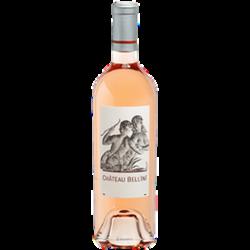
1 minute read
The Wine Times
DID SOMEBODY SAY ROSÉ?

Advertisement
Happy springtime to everyone! I hope everyone has had a wonderful start to the new year It has been a rainy spring for us here in Houston, but as they say, "April showers bring May flowers". When it isn't raining, I feel like we are getting the perfect patio weather; warm and sunny days with just the perfect light breeze to sit back and relax You may be saying, "A glass of wine would be really great in this scenario," and I couldn't agree more.
This time around, we're pouring up some rosé! Rosé happens when the skins of red grapes touch wine for only a short time Where some red wines ferment for weeks at a time on red grape skins, rosé wines are stained red for just a few hours. As you can imagine, nearly any red wine grape (from Cabernet Sauvignon to Syrah) can be used to make rosé wine. However, there are several common styles and grapes that are preferred for rosé
The maceration method is the most common type of rosé we see available and is used in regions like Provence, France, where rosé is as important as red or white wine This method is when red wine grapes macerate in the juice for a period, and afterward, the entire batch of juice is finished into a rosé wine. This produces darker-colored wine with a richer flavor. Our rosé by the glass option, Whispering Angel, is exactly this type of wine
From Chateau D'Esclan, Whispering Angel is made from Grenache, Cinsault and Rolle (Vermentino). Its pale color is pleasing to the eye and draws one in. The rewarding taste profile is full and lush while being bone dry with a smooth finish. Highly approachable and enjoyable with a broad range of cuisine, such as charcuterie and soft cheeses, or seafood, such as salmon and shellfish.

We have a wide variety of rosé wine to try here at Royal Oaks, so the next time you are dining with us or simply want to take in the sun on the patio, make sure to find me, and we can get some delicious rosé in your glass!







